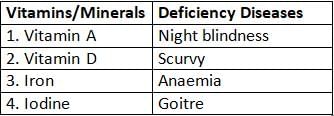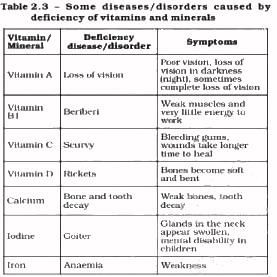Manipur PSC Prelims Paper 1 Mock Test - 4 - Manipur CSCCE MCQ
30 Questions MCQ Test Manipur PSC Mock Test Series 2025 - Manipur PSC Prelims Paper 1 Mock Test - 4
With reference to the nineteenth century Indian economy, consider the following statements:
Statement-I: The poverty of India during this period can be mainly attributed as the remnant of the Mughal period and of the pre-British past.
Statement –II: Britain subordinated the Indian economy to its own economy and determined the basic social trends in India according to her own needs.
Which one of the following is correct in respect of the above statements?
Statement –II: Britain subordinated the Indian economy to its own economy and determined the basic social trends in India according to her own needs.
Consider the following statements:
1. In 1863, Satyendra Prasad Sinha became the first Indian to qualify for the Indian Civil Service.
2. The Indian Police Act, 1861, created a setup for an All India Police.
3. The 1853 Charter Act ended the Company’s patronage, enjoining recruitment to be through an open competition.
Which of the statements given above is/are Correct?
With reference to Colonial powers in India, arrange the following treaties in chronological order:
Treaty of Aix-La Chapelle
Treaty of peace of Paris
Treaty of Ryswick
Select the correct answer using the code given below:
Consider the following statements with respect to Simon Commission:
All the members of the Commission were Englishmen.
The Commission was appointed to go into the question of further constitutional reforms in British India.
The Simon Commission report recommended dominion status for British India.
Which of the statements given above are correct?
Consider the following statements:
1. Eastern Ghats are broken and uneven whereas Western Ghats form a continuous ridge.
2.The Eastern coastal plains are narrower as compared to the Western coastal plains.
3. Rivers Mahanadi, Godavari, Krishna and Vaigai all drain into the Bay of Bengal.
Which of the statements given above is/are correct?
With reference to the Aravalli Range, consider the following statements:
It is one of the oldest fold mountain ranges of the world.
Its height increases from north to south.
It runs across Haryana, Rajasthan and Delhi.
Which of the statements given above is/are correct?
Tropical Cyclones are violent storms that originate over oceans in tropical areas. In this context, consider the following conditions:
sea surface temperature higher than 27° celsius.
absence of coriolis force.
high variations in the vertical wind speed.
Which of the above condition is/are favorable for the formation of tropical cyclones?
With reference to Federalism in India, consider the following statements:
Preamble mentions India to be a Federal state.
The constitution of India under the Article 1 has described India as a federation.
Which of the statements given above is/are correct?
With reference to the ‘Special Officer for Linguistic Minorities’, consider the following
Statements:
The Constitution originally included the provision for the office of the Special Officer for Linguistic Minorities.
The Constitution specifies the procedure for removal of the Special Officer for Linguistic Minorities.
Which of the statements given above is/are correct?
Which of the following statements regarding the State Public Service Commission (SPSC) is not correct?
UPSC.
Consider the following statements regarding Green Box Subsidies under the World Trade Organization:
1. Under WTO, Green Box subsidies can be increased without any financial limitation.
2. Subsidies provided under India's Public Distribution System (PDS) come under Green Box Subsidies.
Which of the statements given above is/are correct?
Consider the following :
1. Public Sector Banks
2. Life Insurance Corporation
3. Central Government-owned companies
4. State Government owned companies
5. Private owned companies
Which of the above-mentioned category of an institution is/are granted 'Ratna status' based on their performance ?
'Neo Banks' has been in the news recently.
What are they?
Which of the following international agreement addresses issues related to biopiracy and benefit-sharing?
Consider the following pairs:

How many pairs given above are correctly matched?
In the context of communication technology, fiberisation is best defined as
‘Neora Valley National Park’ which was recently in news is located in
Which Mahajanapada was located in present-day Bihar and was ruled by King Jarasandha, known for his enmity with Lord Krishna?
What religion gained substantial following among the artisan class in the Satavahana kingdom?
Harsha's reign is known for its cultural development and patronage of art. Which of the following art forms flourished during this period?
Who defeated the last Nanda king, Bhadrasala?
What was the Zabti or Bandobast system?
Which country declared Buddhism as its state religion under the Wei Dynasty?
The Quit India Movement was launched in which year?
The First War of Indian Independence (1857-1858) is also known as:
What was the major achievement of the Home Rule Movement?
Which British mission visited India to propose constitutional reforms?
How long did Alexander remain in India?
What was the most important outcome of Alexander's invasion of India?




















